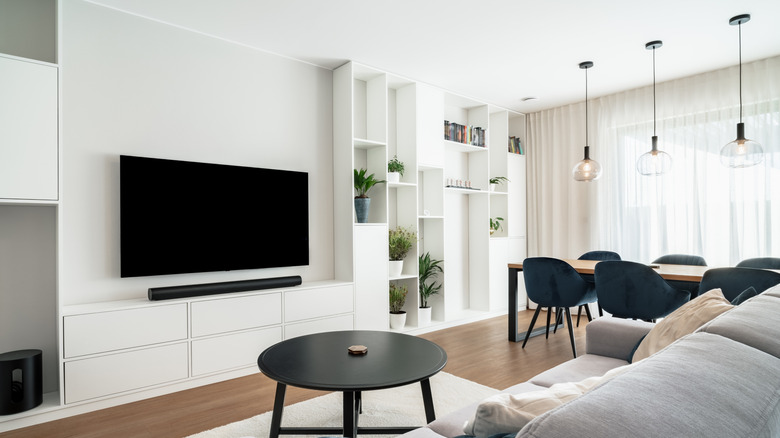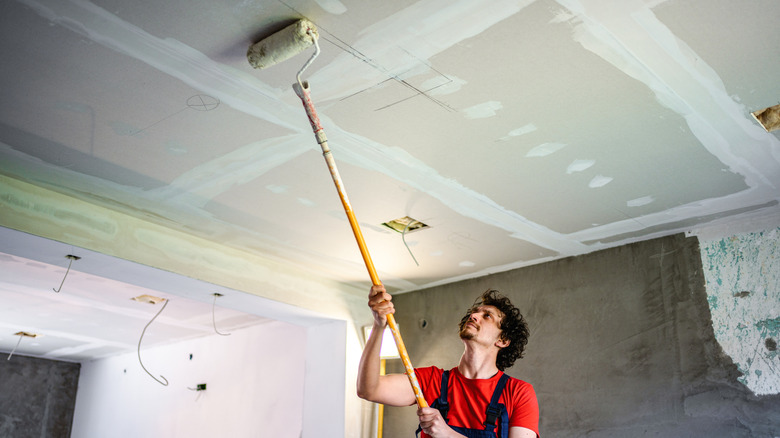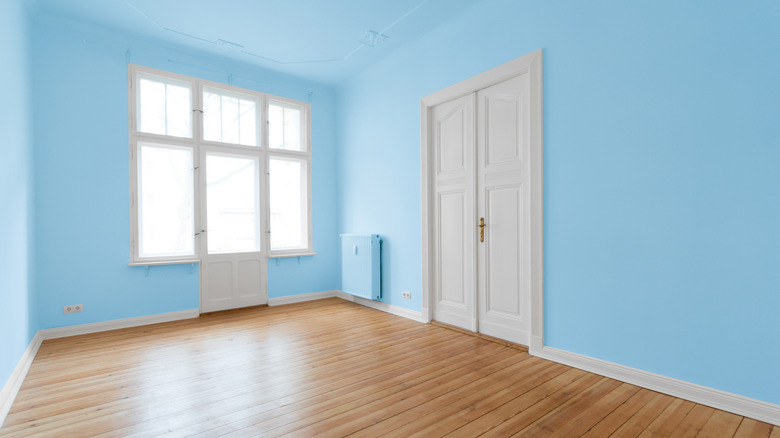Don't Overlook The Ceiling, It's The Secret To A Bigger-Looking Space
If your walls could talk, what would they say? Chances are, your four walls might encourage you to give your ceilings some extra attention. Let's face it: Unless you opted for a stylish statement lighting idea to brighten up your living room, old-school molding, or coffered details, your ceiling can quickly become an aesthetics afterthought. But little did you know, painting your ceiling could be the secret to a bigger-looking space, bringing excitement to that often-neglected area.
At first thought, placing more emphasis on your ceiling might give your small space a cavernous (and admittedly claustrophobic) edge, but in reality? It's the exact opposite. The truth is, color can create an optical illusion, tricking the eye into thinking spaces are larger than they actually are. When applied to the very top of your room, color can bless your home with seemingly sky-high ceilings. Say what you will, but this paint trick is interior design magic.
How to paint your ceiling
Before you sift through fan decks and paint swatches, you should learn how to paint a ceiling in the first place. While you can always hire a professional to take on the legwork, you can save money by taking on this simple and relatively straight-forward project. To start, clear your room of any furniture, window treatments, and ceiling light fixtures. For items that are too heavy to be moved, place a drop cloth over them so they can stay protected from paint splashes.
After you clean your ceiling of any dirt and debris — as well as cover cracks and imperfections with spackle — add thick painter's tape along the very top of your four walls. That way, you won't have to worry about accidentally getting your ceiling's paint color on your other walls. From there, you'll want to apply a coat of primer, which can improve your paint's adhesion and create a smoother, more seamless application.
Once your primer has dried, it's time to start painting! For best results, use a roller brush and work in grid-like sections ranging from three to five square feet (remember — this DIY project won't defy gravity, so make sure you're not standing directly under the area you're painting!). Low-nap rollers are great for smooth ceilings, while textured surfaces are better suited for rollers with a 1/2 to 3/4-inch nap. Most paint shades will require a second coat, but make sure your base has completely dried before applying a second layer.
The best colors to paint a ceiling
Now, the fun part: choosing the perfect color for your ceiling. While the right shade will ultimately boil down to personal preference, there are some paint colors that will make your space look bigger. For example, a crisp white or cool-toned neutral can make a space appear airier. Meanwhile, paints with a glossy or lacquered finish can help bounce the light around, creating the illusion of an enlarged area.
While there are no colors to avoid — after all, your home should reflect your personal style — exercise caution with darker hues. Black or charcoal pigments might ooze a cozy feel, but they don't always read roomy. That's exactly why it's crucial to decorate strategically. If you're really sold on a darker ceiling, draw the eye upward with large-scale art, floating shelves, or drapes.
Another trick to try: drenching your entire space in the same shade. Though color-matching your walls and baseboards can make a room look bigger, painting the entire room one hue can blur the line between where the walls and ceiling begin and end. The result? A single-shade spot that feels surprisingly spacious.


